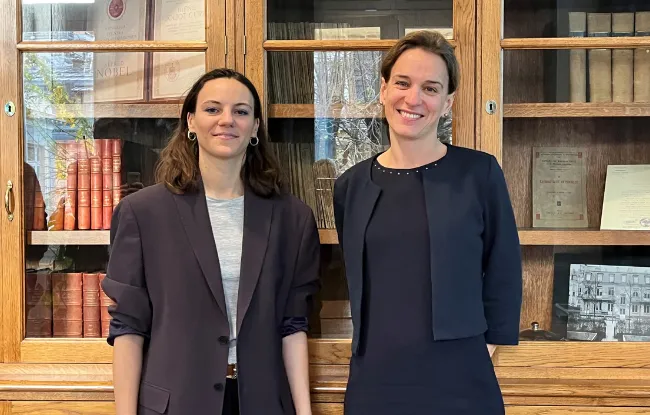- Home >
- Institut Curie News >
- Distinguishing between vesicles to better understand tumor progression
Cells produce all kinds of vesicles, small biological “bubbles” surrounded by a lipid membrane, to communicate or exchange molecules. Not all extracellular vesicles are produced in the same way, however. Some are generated inside the cell, in sacs called multivesicular bodies, before simultaneous release to the extracellular environment. These vesicles are classified as exosomes. Others are formed directly on the membrane, one after another. These are known as ectosomes. Although the distinction is clear, biologists still do not know the implication for vesicular function.
Is the purpose different? Do they transport different messages? To answer these questions, it must be possible to recognize them in the extracellular environment. The work of Clotilde Théry and her team at Institut Curie seems decisive on this point.
Using fluorescence video microscopy, researchers analyzed the pathway of the membrane molecules transported by these vesicles in cultured cells. They were interested in two proteins in particular: CD63 and CD9. They are commonly used as exosome markers. In this study, the team noticed that CD9 is primarily found on the membrane vesicles, i.e., the ectosomes, but is also found in small amounts in the multivesicular bodies. Similarly, CD63 is primarily related to the exosomes but is also transported by the ectosomes. “The markers are not exclusive”, explains Clotilde Théry. “So when these proteins are used to analyze extracellular vesicular function, in reality both ectosomes and exosomes are being analyzed”, she continues.
This confusion impedes work aiming to understand how these extracellular vesicles contribute to tumor progression. “A lot of research studies the vesicles secreted by tumors. The hypothesis is that some have an anti-tumor function while others promote the cancer”, adds Clotilde Théry. To study this process, it is essential to distinguish between the various types of vesicle.
Using microspheres on which antibodies specifically bind certain proteins to capture the “CD9-heavy” vesicles and the “CD63-heavy” vesicles, biologists at Institut Curie discovered other markers which could help to distinguish between exosomes and ectosomes. They are currently validating them in other types of cell culture.
There are also other candidate markers which should be investigated to characterize subfamilies of vesicles
specifies Clotilde Théry.
An in-depth study of the entire process could allow new types of cancer treatments to be developed. “Inhibiting pro-tumor secretion while maintaining anti-tumor secretion could allow us to halt tumor progression”, concludes Clotilde Théry.

Real-time tracking of the pathway of CD9 (red arrows) and CD63 (blue arrows) in the cell shows that both molecules are temporarily found in both the multivesicular bodies and the membrane, illustrated here one hour after the pathway started. This explains why neither CD9 or CD63 are exclusive to the ectosomes (formed on the plasma membrane, PM) or the exosomes (formed in the multivesicular bodies, MVBs).
Citation: Specificities of exosome versus small ectosome secretion revealed by live intracellular tracking of CD63 and CD9. M. Mathieu et al. Nature Communications 19 July 2021, doi: 10.1038/s41467-021-24384-2


